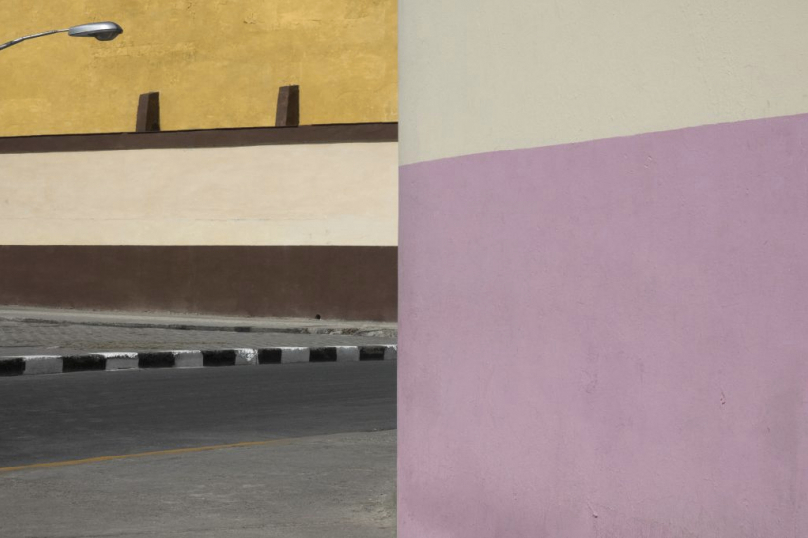“…the world you live in is colour: you must re-invent it in order to show, as the colour becomes the very subject of photography, it is not a mere recording…” – Franco Fontana
The work of one of my favorite colour photographers is on display in Modena. After almost 60 years of work, Franco Fontana is given no less than two exhibitions across three venues. I saw a retrospective of a reasonable size, maybe 100 photographs in Venice a few years ago. But the Modena exhibitions are supposed to be the main event. I hope to go there in the coming weeks.
At 86 years of age, Fontana keeps working, the quality and the eye remaining intensely strong. In a recent interview by Paola Sammartano, Fontana talks about his work. I found it enlightening. As you can see from the quote above, making colour photographs is challenging, as what we all live and see is in colour – well most of us anyway – and in order for this not to be just another postcard, enter the magician’s eye for composition.

Fontana explains that what the colour photographer has to do, is turn the colour of the everyday into the subject itself. To a photographer – me – who tries hard to see the world in black and white and shades of grey, this is profound. Fontana does not look for a particular composition of everyday life, as I do, he looks to take colour and turn the colour that he sees into the subject of the photograph, not actually setting out to record the object or scene that is in front of him. Fontana has a different way of seeing.
I first knew Fontana from books. He has done a lot of books. Still does. A few years ago, I bought a Polaroid by him, which I proudly framed. And more recently, I added a second photograph. It is one of Fontana’s most famous photographs taken in the south of Italy. The rolling landscape and the single tree are brought together by clear lines of precise colour coming from each field. Note that there is no horizon and aside from the tree, which could be large or small, there is no indication of scale. It is a wonderful colour composition. It works. Much better in colour, than it would have in black and white. This is a photograph of colour, not a tree, nor a landscape. This is pure Fontana.

Fontana says that: “….what you see is colourful and has to be reinvented [by the photographer] because the colour itself must turn an object into a subject. If it remains merely an object, then I think the film, and not the photographer, is managing the colour.”
To me this explains why in his most successful photographs, Fontana is not making colour saturated, beautiful postcards, but is using the colour that he sees to create compositions that are about colour itself. Colour separate from what is actually before him when he takes the photograph.
I think many would probably suggest that Fontana’s most successful photographs have an abstract quality to them, showing fields of colour that together with other fields of colour create a splendid composition. Fontana is asking the viewer to think about colour for its own sake. Some will seek to find, and in most cases can make out the original object of the photograph. There is nothing wrong with wanting to understand the origin of genius. It is to better understand what it was that Fontana saw, and reinvented, so well.
Among today’s hyperactive selfie-nation there are surely phone owners who can make Fontana photographs, either by chance, or by computer. But, I admire that Fontana with film, camera, lens and available light, repeatedly can produce profound statements of colour that are not only recognizable and in his signature style, but also represent the finest in colour photography.
The curator of one of the two shows in Modena, the one not curated by Fontana himself says that: “His bold geometric compositions are characterized by shimmering colours, level perspectives and a geometric-formalist and minimal language”, going on to say that: “The way Fontana shoots, dematerializes the objects photographed, which loose three-dimensionality and realism to become part of an abstract drawing.”
I like what Fontana himself says a lot better, but then, he is only the photographer.
Harbel
Note: See the exhibitions at the three venues in Modena through August 25th at:
Palazzo Santa Margherita, Sala Grande, Corso Canalgrande 103
Palazzina dei Giardini, Corso Cavour 2
MATA – Ex Manifattura Tabacchi, via della Manifattura dei Tabacchi 83

